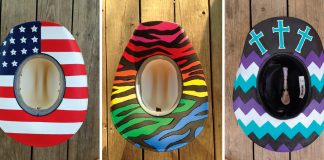 Why can your horse make a beeline to his feed bucket but can’t travel in a straight line when he’s under saddle? If your horse is motivated to get someplace quickly, he will follow the shortest path to get there. However, when you are on his back, his ability to get from point A to point B vanishes. It’s not really gone though, because it was never there in the first place. The fact is, your horse has absolutely no idea what a straight line is.
Why can your horse make a beeline to his feed bucket but can’t travel in a straight line when he’s under saddle? If your horse is motivated to get someplace quickly, he will follow the shortest path to get there. However, when you are on his back, his ability to get from point A to point B vanishes. It’s not really gone though, because it was never there in the first place. The fact is, your horse has absolutely no idea what a straight line is.
In order to do this successfully, you’ll need:
- A balanced seat. Ride with your weight equally distributed over your seat bones and stirrups. Sit tall with your ribcage lifted off of your waist. Maintain a long leg and vertical ear-shoulder-hip-heel alignment.
- Even and level hands. Carry them above your horse’s withers and at the width of your hips.
- A consistent hand position. Take the time to shorten and lengthen your reins while communicating with your horse instead of moving your hands up, down, or sideways.
- To be able to turn rein pressure off and on without pulling. Close your fingers on the reins to create boundaries when your horse needs guidance and open your fingers when he relaxes into the proper poll-to-tail alignment and is tracking a straight line.
Rhythm is key to having your horse follow a direct path. A horse that slows down and speeds up lacks impulsion – energy generated by the hindquarters that propels the horse. A purposeful and forward gait with metronome consistency ensures that each time your horse’s hoof makes contact with the ground it is directly in front of the hoofprint he just left behind.
You’ll feel the least amount of impulsion and rhythm when your horse is at the walk. Ask him to go straight by riding two-handed with a light and even feel of the bit. If your horse wanders, softly close your fingers on both reins to create “walls” on either side of his body while encouraging him to step lively with pressure from your legs or nudges from your heels that match the tempo you are trying to create. It may take several strides for your horse to figure out what you’re asking him to do. Be patient and consistent with your rein contact, giving your horse as much time as he needs to figure out how get his body in the correctly aligned position. Then immediately release your cues when his stride strengthens and he confidently steps straight through the middle of your rein contact.
Tracking a straight line will be easier at the jog/trot, as long as your horse maintains his impulsion. Discourage him from stepping sideways by driving him forward into soft supportive hands. If he speeds up instead of becoming steadier and straighter, turn him through a serious of changes of direction or ride a few circles until he holding a consistent pace and can return to his original path.
Of all the gaits, the lope/canter is the most difficult because your horse is loading his leading leg on the third beat of the stride. So, be prepared for your horse to drift to the inside as his leading leg hits the ground. Place your inside calf against his side behind the cinch, and open your outside rein to help him keep his shoulders in front of his body. Also work to maintain your own balance. Focus on staying centered in the saddle but be careful not to stiffen. Your hips need to stay fluid and follow your horse’s motion so he can sustain rhythmic forward energy.
At any gait, riding your horse on straight lines is an essential skill that will improve his balance, focus on you, and willingness to be guided anywhere you’d like him to go.
Liked this article? Here are others that you’ll love.
Neck Reining Dos and Don’ts
Competing in Western Horsemanship
Go Bridleless Part 1






Interesting
oh, my pony can not walk in a straight line to save her life! hehe!
I’ll try all of this…. He just knows how to go in a straight line on the way home.
I guess that would be why it’s so much easier to drive a horse in a straight line!
Have to give ideals a try. I know practice, practice, practice.
Good to know its not just me…